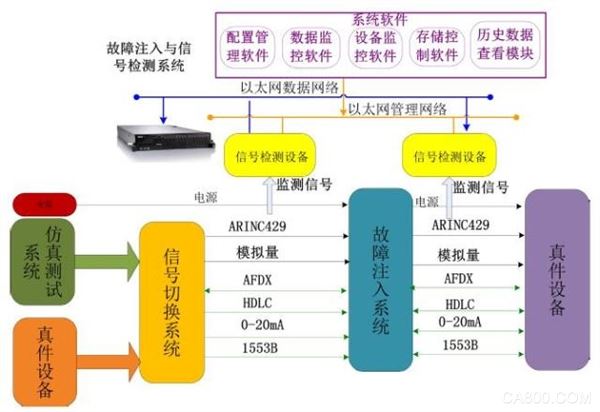Runke's HiFID fault injection system is based on the original physical/semi-physical system to create a fault environment, which uses the signal from the original interconnected devices to simulate signal faults on the line or interface. The fault types include the physical layer and the electrical layer. The protocol layer. The fault signal that can be simulated covers almost the entire electronic signal in the industrial field. According to the type, it can be divided into bus type, analog quantity and switch quantity.

From the perspective of system stability, reliability, correctness, and safety, it is necessary to develop fault simulation and fault injection for the development of systems and equipment. The HiFID fault injection system can implement the following fault injection functions:
Defects in the detection system/equipment function design
• Defects in the performance of the inspection system/equipment
Verify system/device failure adaptability
Recurring faults to assist in fault location
Diagnose system failures and provide effective means for troubleshooting
Verify system design and provide powerful tools for system verification
System composition
The HiFID fault injection system includes fault injection equipment and fault injection management software. In the event of fault injection of the signal, the fault injection device is serially connected to the bus. Fault injection equipment is controlled through fault injection management software to implement different fault injection functions.
The fault injection management software controls fault injection equipment through Gigabit Ethernet to implement fault injection. The fault injection software provides an operation interface for the management of fault items and the configuration of fault items.
The typical functions of fault injection are:
Physical layer fault injection: mainly includes fault signal simulation, signal to ground/power short circuit, signal line 22 short circuit, signal serial impedance control and signal parallel impedance control
Electrical layer fault injection: Mainly includes common mode amplitude adjustment, voltage threshold adjustment, duty cycle adjustment, slope adjustment of rising/falling edge, and signal delay.
Protocol layer fault injection: Based on the bus protocol, it generates specific protocol layer faults for different bus interfaces and signal interfaces, replaces data with specific meaning, etc.
Typical fault injection equipment
1553B fault injection equipment
ARINC429 Fault Injection Equipment
? AFDX fault injection equipment
RS422 / RS485 fault injection equipment
CAN fault injection equipment
Ethernet fault injection equipment
Analog fault injection equipment
0~20mA fault injection equipment
? Switching signal fault injection equipment
Power failure injection equipment

Hengrun Technology
6F, Block D, Zhizheng Building, No.7 Zhichun Road, Haidian District, Beijing
Website:
Shenzhen ChengRong Technology Co.,Ltd. , https://www.dglaptopstandsupplier.com